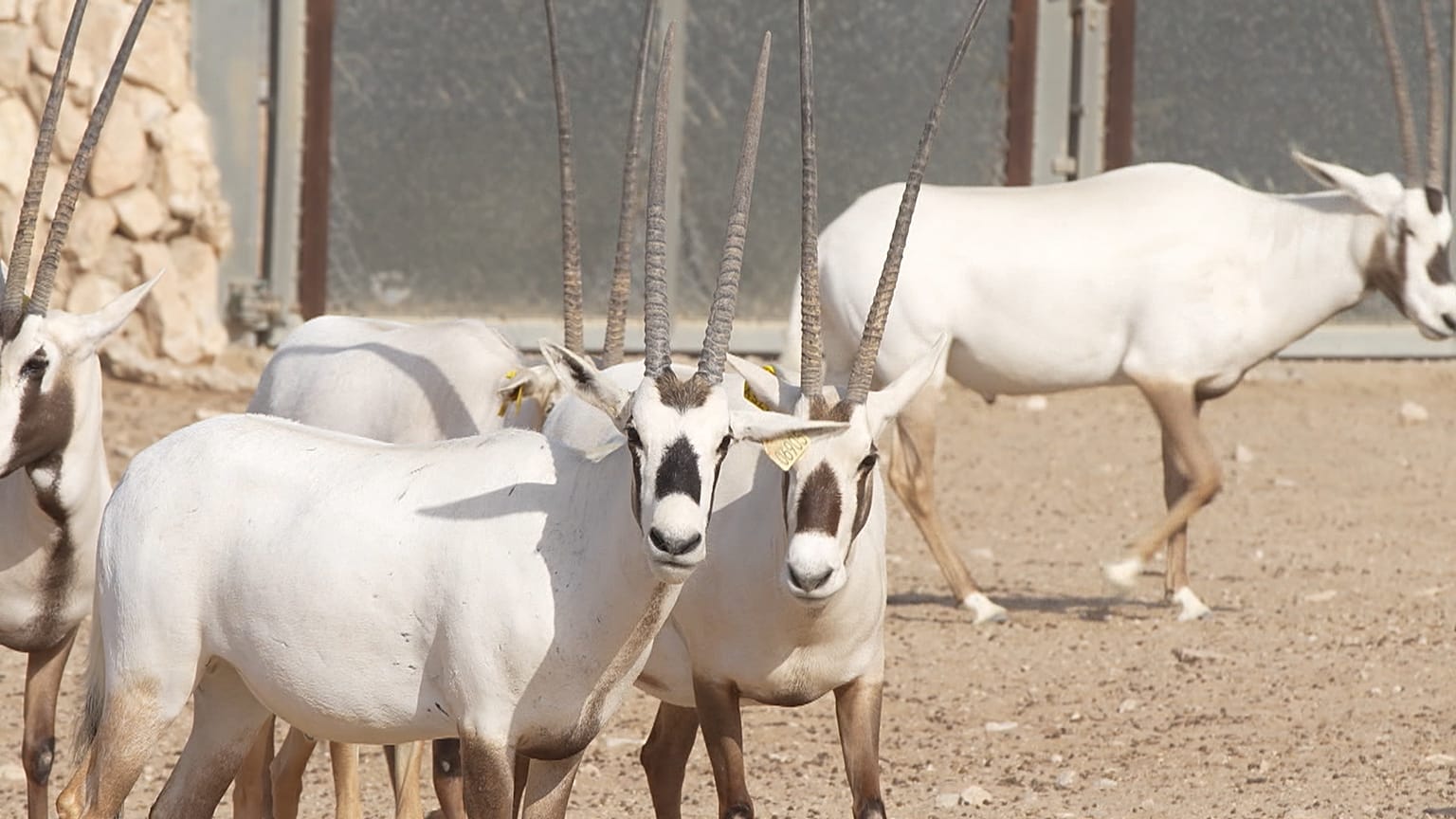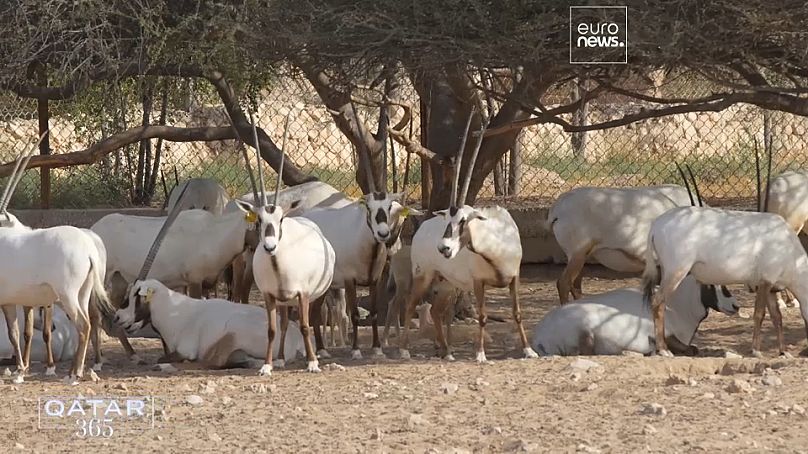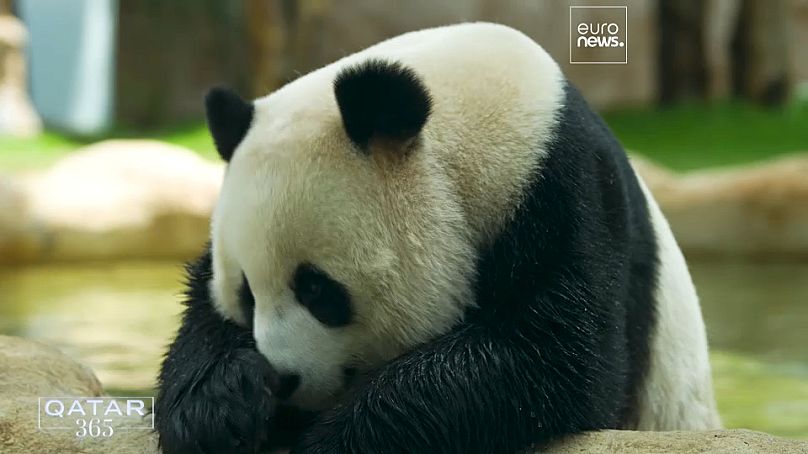Qatar, a nation known for its stunning architecture and rich cultural heritage, is also making strides in the field of wildlife conservation. The country is demonstrating an unwavering commitment to preserve vulnerable animal species, including the Arabian oryx and, most recently, giant pandas.
Qatar's conservation efforts come alive at the Al Maha Sanctuary, situated a mere 30 minutes west of Doha. This government-run wildlife reserve is a haven for the Arabian oryx, which was on the brink of extinction in the 1970s.
"We try to protect them from excessive human interaction because we are in the process of re-wildisation," says Andrea Dogliero, a veterinary doctor at the Al Maha Sanctuary.
The oryx's journey to recovery has been a tumultuous one. Fifty years ago, the species was declared extinct in the wild. Their restoration has been a result of an international conservation plan, Operation Oryx, which aimed to safely reintroduce the species back into a managed wildlife population.
Idmour Merza, another veterinary doctor at the sanctuary, explains the challenges in maintaining a healthy population. "The female oryx has a gestation period of almost nine months. So, they cannot produce more than one calf in one year. And I'm guessing they [past generations of hunters in the Middle East] used to hunt [oryxes] in the hundreds during the hunting season. So, if you make a simple calculation, the oryx simply wouldn't be able to keep up the pace with the rate of the hunting."
However, conservationists' efforts are paying off, with around 3,000 to 3,500 Arabian Oryxes under Dogliero's care at the Al Maha Sanctuary and an estimated 18,000 spread across the country.
"The goal of this country, like all the Middle East, is to see the Arabian oryx, these species, these symbolic animals again into the wild because there is no point in keeping breeding them," says Dogliero, reflecting on the journey from critical endangerment to a stage of vulnerability due to successful conservation efforts.
Images that inspire
In this arduous journey of wildlife conservation, the role of wildlife photographers like Hamad Al Khulaifi is also noteworthy. Al Khulaifi is known for his stunning bird photography - captured while spending days, weeks, even years, building their trust just to get that perfect shot.
His images help to spread awareness and ignite the passion for wildlife conservation.
"When I started bird photography, I was taking pictures normally like other photographers trying to get the best shot with a blurry background and to show the colour of these birds." Al Khulaifi explains. "But these birds, they have a life, they have a mysterious life, in the field. Like they are going, flying, fighting, eating, breeding, all these things that I want to show in one picture so that you can imagine what this bird’s doing. So, you will start to think and ask yourself that there is a story behind this picture so it's a good thing to know more about these birds."
He believes that establishing trust with the wildlife he photographs is crucial, and encourages other photographers to experience the magic of the wild. "Don't just stay at home, sitting. You won't be able to know about what's going on except if you are in the field, in the nature looking at these birds. So go off, take your camera if you are a photographer. If you want to be a photographer, try to get some shots and believe me, it’s [an] amazing thing."
Giant Pandas
The story of conservation efforts in Qatar doesn't stop with oryxes; it also includes the unlikely residents of the Middle East – giant pandas.
Qatar is now home to Thuraya and Suhail, who have been gifted to the country from a conservation center in China. They live in Panda House, the Middle East's first-ever panda park, which is located 50 km north of Doha.
The Panda House is designed to mimic pandas' natural habitat, including a structure that resembles the mountains of Sichuan, where pandas originate from. "When we build the building, we have to make sure that we can regulate the temperature and we can change it to mimic the four seasons as well, because they are indoor all year round" says Cissy Kuo, curator of the Panda House.
Every detail of the Panda's nature is taken into account and is the reason why Thuraya and Suhail have seperate encloursures. "They are solitary animals, meaning they live alone in the wild." says Ku. "So in the wild, each panda will have their own territory, which is quite big, and they don't really overlap. So to keep it as natural as it is, that's why they have to be separated."
The team at are hoping to add to their Panda population with the help of the cuddly pair. However Panda's are famously very diffcicult to breed, evidenced by the species population problems in the wild.
"The female panda would only ovulate one day in a year. So, as a husbandry team, we have to observe, behavioural wise, the changes to see when that moment is and we work together with the vet team in a scientific way, like taking blood or collecting urine to get the hormonal changes to find that day. And then we will do our best and their best to hopefully have some offspring." explains Kuo
Through breeding and reintroduction programs, global efforts to protect pandas have become a shining example for other conservation initiatives. Since 2021, giant pandas have been declared no longer endangered, but still considered vulnerable.
"We hope this kind of project will help people understand more about pandas and about conservation." Kuo adds.
The efforts of conservationists, veterinarians, photographers, and countless others give us hope for a sustainable future where wildlife continues to thrive in its natural habitat. This is the commitment of Qatar, reflected in its conservation efforts and the painstaking work of people like Dogliero, Merza, Kuo, and Al Khulaifi.


















